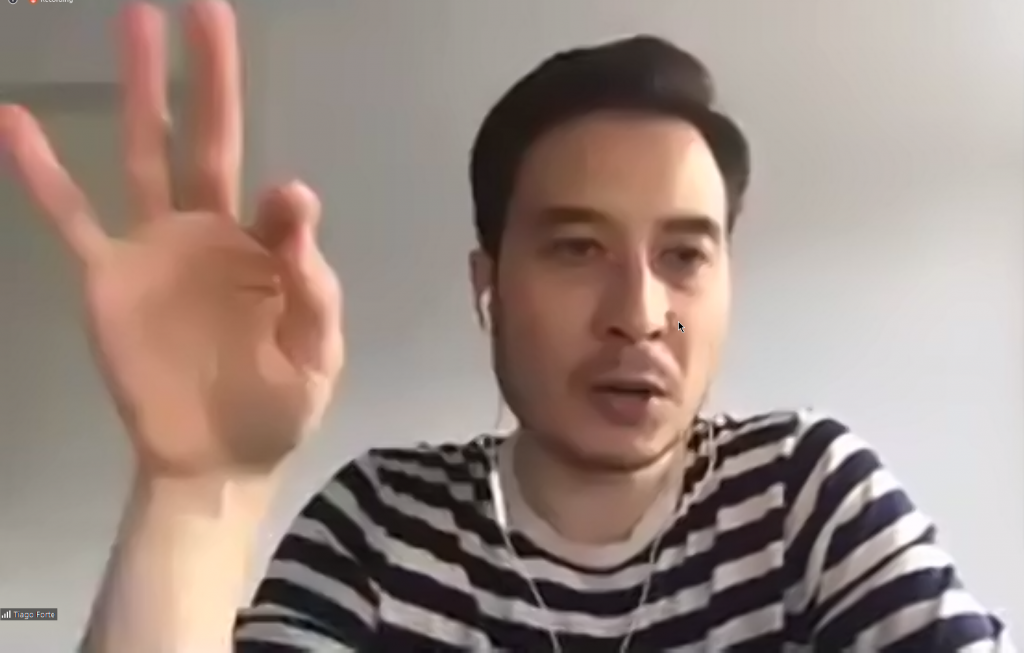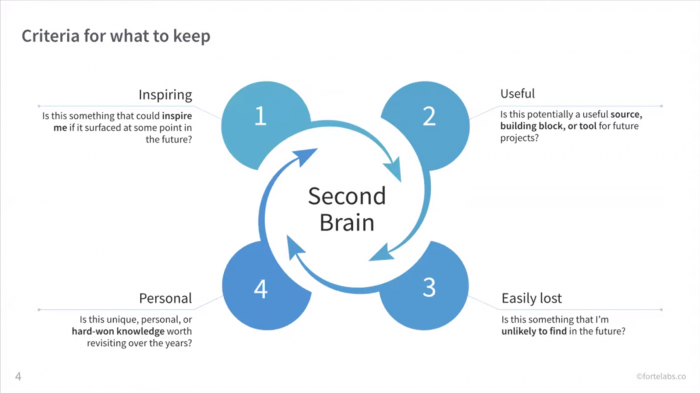Live Notes, updated on 30 March 2020
I was taking notes during the webinar. Enjoy.
Now with the video recording, embedded.
Introduces himself.
Introduces Digital note taking aka Personal Knowledge Management.
Gives basics of Zoom.
He will collect notes and distribute after.
Encourages to turn webcams on.
What is the moment that you decide to take a note?
What, How, Why
What to take a digital note of
- Inspiring (for me in the future?)
- For instance a TESTIMONIAL notebook to be picked up
- Useful
- Source, building block, tools
- Use best practices to not reinvent things pre-existing
- Easily lost
- Things unlikely to find in the future? (uses questions to set criteria)
- Personal
- Unique, hard-won knowledge worth revisiting over the years
Types of digital notes
Tiago shows a table of content for a sample of his notes in about two months
- Marketing assets
- Everybody needs to be in marketing for their interests. Things which are difficult to come up with yourself.
- Example: testimonial, case studies, list of top features,
- Mementos
- Keeping track of interesting events about your work.
- Example: your top selling book in amazon
- Reference/record-keeping
- Practical and utilitarian
- Workaround for publishing ebooks on Amazon internationally
- E-Mail template messages
- New content
- Ex: Ideas inspiring new articles
- Re-purposed content
- Content produced as reactions to interactions online to be reused.
- “Content can be infinitely re-purposed”. Avoid starting from scratch, for instance when moving from one medium to another.
- Ex: Top Posts coming from actual community preference.
- Most frequently asked questions.
- Favorites
- Instapaper favorites sync-ed
- Call/meeting notes
- Interesting and useful things from calls.
- Contributions of others
- People’s contribution, feedback, revisions, comments
- Language to borrow
- Capturing the way an idea is expressed
- Language can and should be re-purposed
- Helpful models
- Best practices ready to be applied.
- Ex. an email to send when a client purchases a course, to be re-purposed for my course. Model here is more a template.
- Spreadsheet to keep track of podcast publishing schedule.
- Placeholders
- Empty spaces preparing for future content
- Research/inspiration
- Early stage of note taking. You read something and you don’t think when and if it will be useful. Put here anything that resonates with you.
- Planning/Reorganization
- Ex: analyzing topics of article published and turning them to tags in the blog.
- Preparation/Agenda
- Key questions for an interview.

Tiago takes questions
Mentions P.A.R.A. system
Which Note Taking app to use?
Difference between paper and digital notes
Capturing, identifying, titling, citing, searching, linking, indexing, moving, sharing. Most of it has been automated in digital. Can you do the same on paper?
Automation allows a more fluid and fast-paced writing workflow. Integrating different services providing sources allow to make notes to converge in a consistent manner.
Tags allow to describe content to improve search-ability.
Linking: rather than referring to a numerical id, “links” in digital are actual working links. Sames for index. See TOC in Evernote, for instance.
Easily moving notes between notebooks without breaking links and losing metadata.
Demo: Ebook highlights in Kindle
Shows how to create an highlight to be shared via email. If you send it to a special email address (for instance in Evernote) it get automatically added to your notes.
Demo: Online Articles
When on your mobile phone you can, for instance, save it in Instapaper and in the Read Later app you can easily read saved articles (even in dark mode, easier on the eyes). With IFTTT you can integrate “read later” apps with your “note taking” apps to gather all highlights into your notes.
Demo: Webpage and Liner
Select interesting parts of a web page you are browsing and with Liner you can synchronized them with your notes.
DEMO: PDF Highlights
Similarly, highlight with your favorite PDF reader and share the selected highlights to save them into your digital notes. Searching, you’ll be able to get back to the source.
Readwise allows to do time-spaced reading of your notes.
An ecosystem of tools
Tiago shows a suite of different categories of tools to acquire, read, manage and save notes.
Reflections
Allowing potential combination of pieces of information to enhance creativity.
Reviewing notes? Do not. Just retrieve them only when you have a specific context of use.
Tools mentioned: Evernote, Notion, GoodNotes, Notability, etc. Difference between drawing apps and note taking apps, they serve different purposes.
Your Second Brain is an entire constellation of apps. It is not just ONE software. Do not use one piece of software. You need to use your most suitable combination of digital and analogue tools.
Why Note Taking?
Information overload deserve to be replaced with “Information Exhaustion“. See “How Emotion Are Made“: information has physical effects, it can have direct biological impact to your body. It comes down to your quality of life.
Every day we consume a huge amount of information. And it is increasing about 3% per year. source UC San Diego, 2014.
FOMI: Fear Of Missing Information. So much of our life happens online and it is not realistic to abstain from technology. Similar sound to the word for “Hunger” in Portuguese.
What is the mindset of a curator?
Instead of having the information from outside to hit your brain directly, you create a filter between the outside world and your mind. So you strategically engage with information only when and if you need to.
Shifting attention from public to private, from novel to timeless, from sensational to subtle, from consuming to digesting (publishing, sharing and collaborating).
Digital Abstinence?
Better using the metaphor of information as food. What food/information to consume? When? How can you get the right “nutrients” from the better sources?
Building a Second Brain, The Course
Learn more about Building a Second Brain
Tiago’s publicly share Evernote notebook
Gettings Things Done (GTD) deals with actionable information, while BASB deals with any other type of information.
Zettelkasten and Daniel Luhmann
Notes as intellectual assets to nurture the network and compound effect.
Right intention but people tends to be too much fixated with the execution.

Leave a Reply